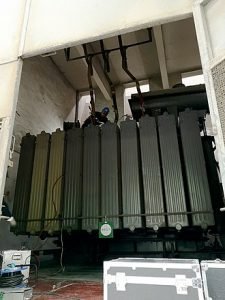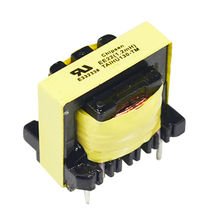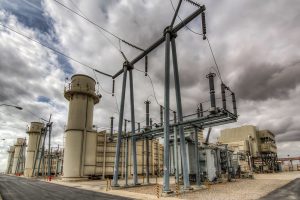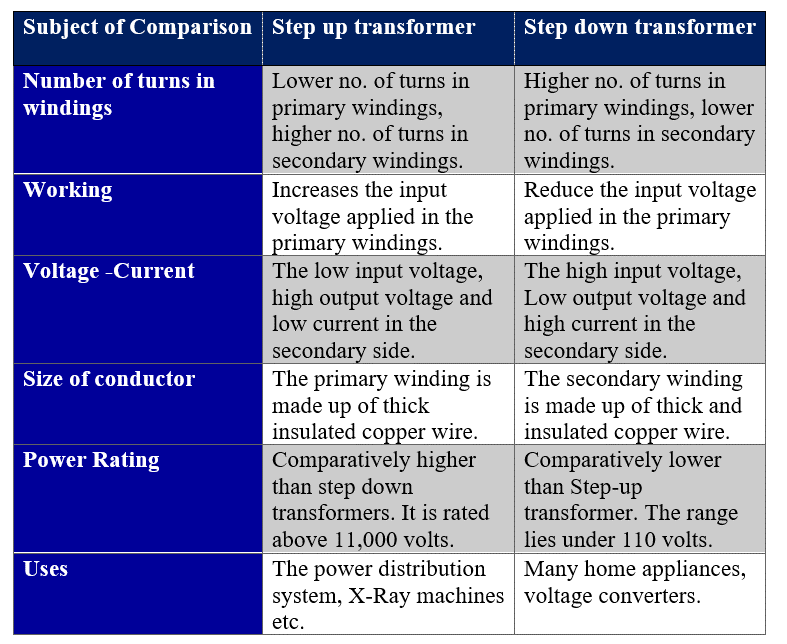Points of Discussion:
- Definition
- Construction
- Working
- Applications
- Frequently asked questions on step up transformers.
Definition of Step up Transformer
A transformer transfers electrical energy. Step up transformer is one type of electrical transformer. A step-up transformer increases the input voltage and provides increased voltage as the output. In the process of transferring the power, the power and the frequency of the power remains constant.
Construction of Step up Transformer
Step-up transformer construction means the construction of core and construction of the windings.
Core Construction:
Transformer’s core is a specially build part which is created with spongy metals. The reason behind choosing the spongy metals for core is that magnetic flux can pass through those types of metals. The core is surrounded by the coils. The design of the wrapping decides the types of the core.
A transformer core will be called as a Closed core transformer if the core is bounded by the coils from the outside.
A transformer is called Shell core transformer if the core is surrounded by the coils from inside.
For industry purpose a shell type of core is being chosen over a core type because a core type has the shortcoming of ‘leakage Flux’.
Windings:
Windings are another important part of transformer which are basically coils of wire and carries current. The Primary and secondary windings are made up of copper and Aluminium. Primary windings take the input voltage and the secondary voltage provides the output voltage. The classification of step-up or step-down is done here. Now, for a step-up transformer the number of turns in secondary windings is more than the number of turns in secondary windings.
Step Up Transformer Working principle
Step up transformer has the same principle as a normal transformer. Step-up transformers take a lower voltage and provides a higher voltage. Their working is based upon the laws of Faraday and the turn ratio theory.
Inside a step-up transformer, current flows due to the input voltage. The current flow induces a magnetic flux around the windings and the flux passes through the core of the transformer.
The voltage in the secondary windings is induced by the secondary-winding.
The next working principle is the turn ratio. Turn ratio is given as the ratio of primary winding’s turn number to the secondary winding’s turn ratio. It is also described as the ratio of the input voltage to the output voltage.
Turns ratio = Nprimary/Nsecondary =Vprimary/Vsecondary ———————- (i)
Or, Vsecondary = Vprimary *(Nsecondary /Nprimary) ———————(ii)
Here, Nprimary = Primary windings number of turns
Nsecondary = Secondary windings number of turns
Vprimary = Primary side’s voltage
Vsecondary = Secondary side’s voltage
Using the (ii) marked equation we try to calculate the secondary voltage. It is clear that the input voltage is constant. Now changing the turn ratio, we can get the wanted output voltage. A step-up transformer is used to produce a higher voltage at the output side. That is why the Ratio of (Nsecondary/Nprimary) is fixed to greater than 1.
Now, from the equations, we can observe that the Nsecondary will be greater unlike step-down transformer. That is why a step-up transformer consists of higher number of turns in the secondary windings.
Learn how a transformer works. Click here To Navigate!
Applications of Step up transformer
Step-up transformer has several applications. Most of the applications are very specific and from different fields.

- Applications in Power Systems: Step-up transformer is one of the most important part of power distribution system. A step-up transformer helps to step-up the supplied voltage as per the need.
- Electronics device and Instruments: Step-up transformers is used inside numerous electronics devices and instruments. Devices like rectifiers, ADC and DAC converters use this type of transformer.
- Electric motor and generators, microwave ovens, X-Ray machines and various home appliances use to step up transformers.
Frequently asked questions on step up transformers
1. How do you identify a step up and step down transformer?
A step up transformer supplies increased voltages on the load whereas a step down transformer supplies reduced voltages on the load. Measuring the input voltage at the primary winding and output voltage at the secondary windings, one can identify the type of transformer. One can check the current value of input and output also. If the current value is more than the supplied, then that is step up type, else that is step down. This was a process. Another process will be to check the turn ratio. If the turn ratio is less than one, then it is step up else it is step down transformer.
Checking the types of wire will be another way. For a step up transformers, primary windings have thicker wire density than the wire density of secondary windings.

2. What is the need of a step-up transformer?
A step-up transformer delivers increased supplied voltages to its load. So, if there is a need to step-up or increase the supplied voltage for our workings, then it is advised to use a step-up transformer. But that the current value gets decreased. So if we need a higher voltage source with the same current, then a step up transformer would not serve our purposes.
3. What is the purpose of a step up transformer?
Step up transformer helps to increase the voltage. So, the purpose is relatively straight, that is to step up the voltage supplied to it.
4. What is the turn ratio for a step up transformer?
Turn’s ratio is an important parameter of electrical transformers. It is given by the ratio of the primary winding’s number of turns to the secondary winding’s number of turns.
Turns ratio = Nprimary/Nsecondary
Nprimary is the primary winding’s number of turn and Nsecondary is the secondary winding’s number of turns.
Step up transformer has no ideal turns ratio. But in general, the turn ratio is less than 1 in case of a step-up transformer.
5. Write about practical significances of Step-Up Transformers
Step up transformers are very much important for our daily life. It is quite impossible to supply electric if there are no step-up transformers. In a power distribution system, when power is supplied from the power stations, the supplied voltage gets decreased due to the resistance of the supplying conductors. Step-up transformers are required at this time to increase the voltage again keeping the power constant. That is the practical significance of a step-up transformer.

“KRCC 2014 03 07 15” (CC BY-NC 2.0) by davidseibold
6. Differences between a step-up transformer and step-down transformer?
The objective of step-up and step-down transformer differentiates the transformers. The objective of step-up transformer is that it step-up the voltage provided and step-down transformer provides the decreased supplied voltage. Some other differences are given below.

7. Does a step up transformer increase current?
No, a step up transformer does not increase current. Instead, it increases the voltage and decreases current. The power of the signal remains constant, though.
8. Number of turns of a winding of an Electrical transformer is 3000. Another winding has number of turns = 1500 where an AC voltage of 50 volts is applied. Find out the voltage at the lesser number of turns. Find out the type of transformer.
Voltage is applied at the 1500 turn side. So, that is the primary winding and the number of turns of wire = 1500. Let’s say that is Np.
3000 turn side is the secondary side. So this is the secondary winding and the number of turns of wire = 3000. Let’s say that is ns.
50 volt is supplied at the primary side, so that is primary voltage and let’s say that = Vp
We have to calculate the voltage at the secondary side; let’s say that = Vs.
We know that turn ratio = Np/Ns
That is also= Vp/Vs
So, Np/Ns = Vp/Vs
Or, Vs = (Ns/Np) * Vp
Substituting the values, we get-
Vs = (3000/1500) * 50
Or, Vs = 100 volt
The voltage at the secondary side will be = 100 volt.
Now as we can see, the voltage is higher than the supplied voltage, so this is a step up transformer.

Hi, I am Sudipta Roy. I have done B. Tech in Electronics. I am an electronics enthusiast and am currently devoted to the field of Electronics and Communications. I have a keen interest in exploring modern technologies such as AI & Machine Learning. My writings are devoted to providing accurate and updated data to all learners. Helping someone in gaining knowledge gives me immense pleasure.
Let’s connect through LinkedIn –